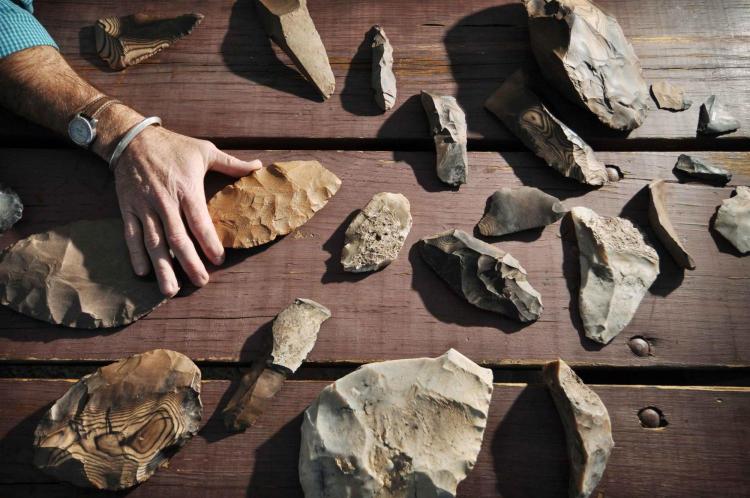
The Mahaffy Cache

In 2008, landscapers dug two feet into the ground of Patrick Mahaffy’s backyard, located near Chautauqua Park in Boulder. They unearthed 83 stone tools from a packed hole the size of a shoebox. The cache was about 13,000 years old.
The tools — now called the “Mahaffy Cache” — were most likely left by nomadic hunter-gatherers known as Clovis, who lived in North America toward the end of the last ice age. The most distant tools likely originated in the Uinta Mountains in northeast Utah and traveled with groups of people to Boulder, said anthropology professor Douglas Bamforth, who Mahaffy originally invited to inspect the cache. Others were made from stone found between the Uintas and Boulder.
“One of the things that we have not emphasized as much as other aspects of the cache is how distinct it is,” Bamforth said. “It is like many Clovis-age caches in that the stone the tools are made from is from far away, but the diversity of different kinds of tools and artifacts in it is very unusual.”
The cache is one of two Clovis collections to undergo a blood protein analysis on the tools, which determined that hunters used them to butcher Ice Age horses, camels, sheep and bears. The tools include knives, blades and flint scraps.
“My favorite is the large biface made from Tiger chert that looks like a double-bitted ax,” said Bamforth. “I have never, ever seen another artifact like that.”
See the Mahaffy Cache in theCU Museum of Natural History.
Photo by Glenn Asakawa

